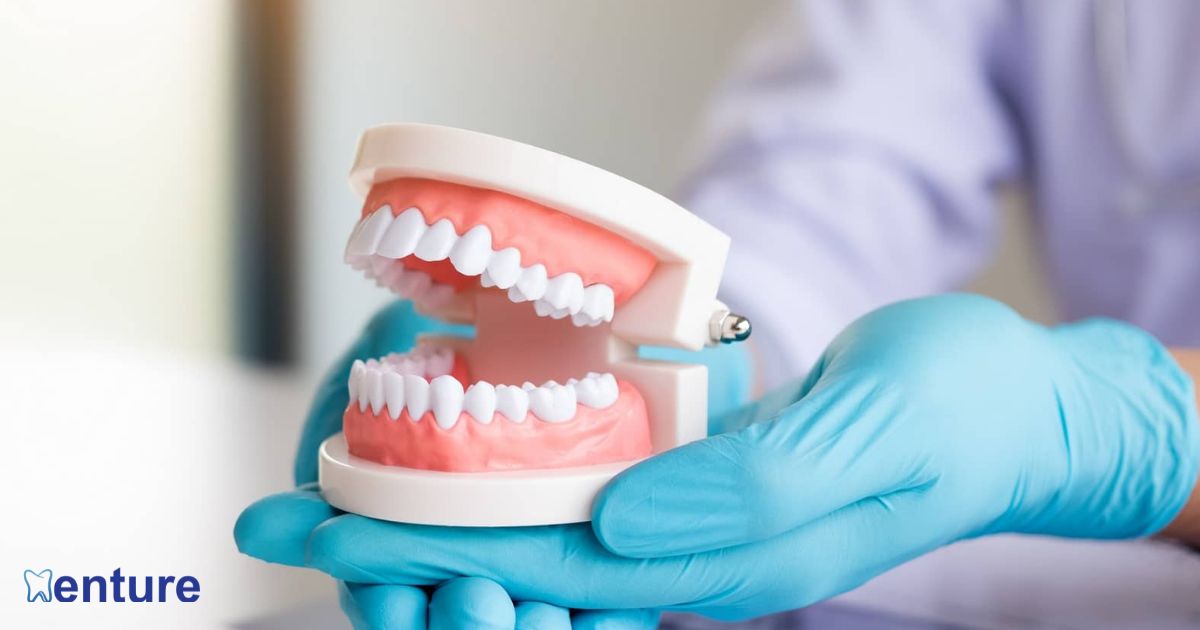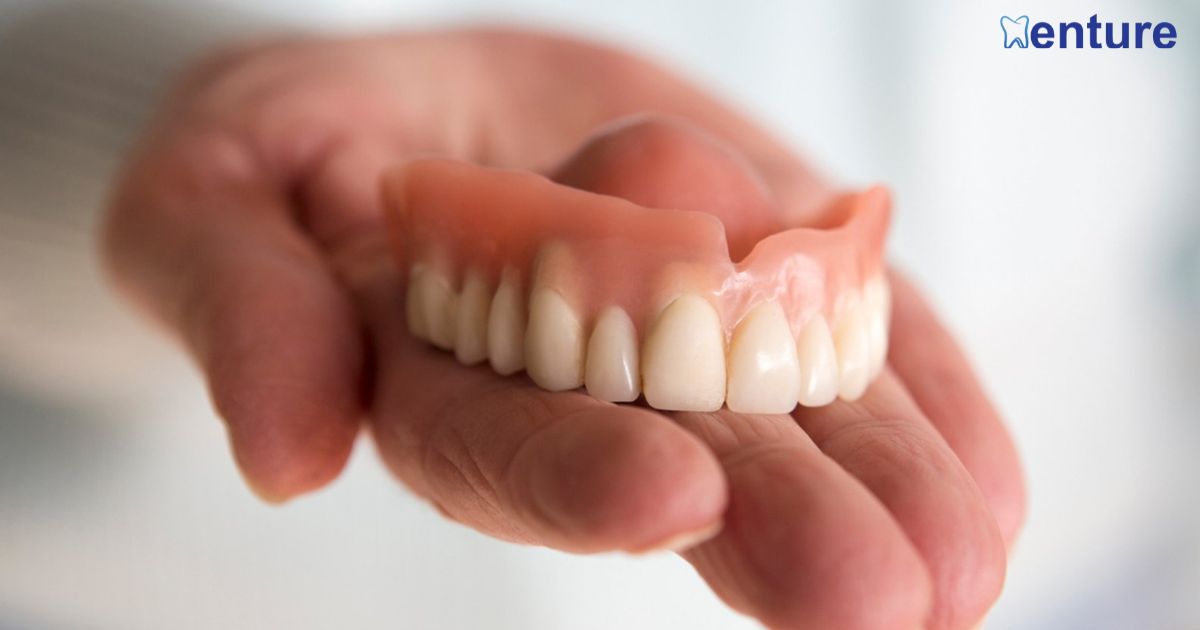How long does it take for dentures to be made? This is a common question for individuals considering dentures as a solution to restore their smile and oral function. The process of creating dentures involves several steps, each crucial to ensure a comfortable fit and natural appearance.
From the initial consultation and assessment to the final adjustments, it is important to understand the timeline involved. In this article, we will walk you through the various stages of denture fabrication and provide an overview of the time it typically takes.
By gaining insight into this process, you can make informed decisions and have realistic expectations about the duration of denture creation.
Key Takeaways
- The initial consultation and assessment involve gathering information, examining teeth and gums, and assessing bite for denture fitting.
- Impressions are taken to create an accurate mold of the gums, teeth, and tissues, which serves as a blueprint for the denture’s fit and appearance.
- The denture base is designed and fabricated using CAD/CAM technology and high-quality materials to ensure durability and longevity.
- Artificial teeth are crafted meticulously, matching the color and shape of natural teeth, and a wax model of the denture is created for adjustments and customization before the final fabrication.
Initial Consultation and Assessment
During the initial consultation and assessment for dentures, the dentist will gather information about the patient’s oral health and discuss their specific needs and expectations. This process involves a thorough examination of the patient’s mouth, including the condition of their teeth, gums, and jawbone.
X-rays and impressions may be taken to aid in the design and fitting of the dentures. The dentist will also assess the patient’s bite and determine the appropriate type and size of dentures for optimal function and aesthetics.
Taking Impressions for the Dentures
The dentist’s next step in the process of making dentures is to take impressions of the patient’s mouth. Impressions are essential for creating accurate and well-fitting dentures. During this procedure, the dentist will use a putty-like material to make a mold of the patient’s gums, teeth, and surrounding tissues.
This impression serves as a blueprint for designing and fabricating the denture base, ensuring a comfortable fit and natural appearance. Once the impressions are taken, the dentist can proceed to the next step in the denture-making process.
Designing and Fabricating the Denture Base
The dentist begins the process of designing and fabricating the denture base by utilizing the impressions obtained from the patient’s mouth. These impressions serve as a blueprint for creating a customized denture base that will fit the patient’s mouth comfortably.
Using advanced CAD/CAM technology, the dentist carefully designs the base, taking into account the patient’s specific oral anatomy and aesthetic preferences. Once the design is finalized, the denture base is fabricated using high-quality materials, ensuring its durability and longevity.
Creating the Artificial Teeth for the Dentures
Artificial teeth for dentures are created through a meticulous process involving the use of advanced techniques and high-quality materials. These teeth are specifically designed to mimic the appearance and functionality of natural teeth, ensuring optimal comfort and aesthetics for the denture wearer. The creation of artificial teeth involves the following steps:
| Step | Description |
|---|---|
| 1 | Making an impression of the patient’s mouth to determine the size and shape of the teeth needed. |
| 2 | Using the impression to create a wax model of the denture, allowing for adjustments and customization. |
| 3 | Crafting the artificial teeth using materials such as acrylic or porcelain, carefully matching the color and shape to the patient’s natural teeth. |
Once the artificial teeth are created, they can be securely attached to the denture base, completing the denture construction process. With the teeth in place, the next step is to try on the wax model of the dentures to ensure proper fit and aesthetics.
Trying on the Wax Model of the Dentures
After creating the artificial teeth, the next step in the denture-making process involves trying on the wax model to ensure proper fit and aesthetics. This crucial stage allows the denturist to evaluate the shape, size, and position of the teeth in relation to the patient’s gums and facial features.
During the wax try-in, the denturist will assess the bite, speech, and overall comfort of the patient. Based on this evaluation, necessary adjustments and modifications can be made before proceeding to the final stage of denture fabrication.
Final Adjustments and Modifications
How can denturists make final adjustments and modifications to ensure the perfect fit and comfort of dentures? After the patient has tried on the wax model of the dentures and any necessary changes have been made, the denturist will proceed with the final adjustments.
This involves fine-tuning the fit, ensuring proper alignment, and making any necessary modifications for optimum comfort. These adjustments may include adjusting the bite, adjusting the shape and size of the teeth, and ensuring proper positioning of the dentures. Once these final adjustments are made, the dentures are ready for the next phase of processing and finishing.
Processing and Finishing the Dentures
Once the final adjustments and modifications have been made to ensure the perfect fit and comfort of the dentures, the denturist proceeds with the processing and finishing of the prosthetic teeth. This involves several important steps:
- Casting: A mold of the patient’s mouth is created using a special dental material.
- Wax try-in: The denturist uses wax to create a trial version of the dentures, allowing the patient to see how they will look and make any necessary adjustments.
- Flasking: The wax try-in is encased in a flask and covered with a special plaster-like material.
- Curing: The flask is placed in a specialized oven where the wax is melted away and replaced with the final denture material, which hardens to form the prosthetic teeth.
With the processing and finishing complete, the next step is to insert the finished dentures into the patient’s mouth.
Inserting the Finished Dentures
Upon completion of the processing and finishing, the denturist proceeds to insert the finished dentures into the patient’s mouth. This delicate process involves ensuring a proper fit and alignment of the dentures with the patient’s existing teeth and gums.
The denturist carefully positions the dentures and makes necessary adjustments to achieve optimal comfort and functionality. It is essential to take the time and attention required to ensure that the dentures are securely in place. Allowing the patient to confidently eat, speak, and smile.
Post-Insertion Adjustments and Follow-Up Appointments
After the dentures have been inserted, the denturist will make any necessary post-insertion adjustments and schedule follow-up appointments to ensure the patient’s continued comfort and satisfaction. This step is crucial in achieving a proper fit and function of the dentures.
During the follow-up appointments, the denturist will assess the patient’s oral health, check the stability of the dentures, and address any concerns or issues that may arise. Regular follow-up visits are essential to maintain the longevity and effectiveness of the dentures.
Getting Used to Wearing and Caring for Your New Dentures
As patients receive their new dentures, they should begin the process of getting used to wearing and caring for them by following the denturist’s instructions. This involves learning how to properly insert and remove the dentures, as well as practicing speaking and eating with them.
It is crucial to maintain good oral hygiene by regularly cleaning the dentures and the mouth. Additionally, patients should be mindful of any discomfort or soreness and consult their denturist for adjustments or guidance.
| Wearing and Caring for Dentures |
|---|
| 1. Insert and remove dentures correctly |
| 2. Practice speaking and eating with dentures |
| 3. Maintain good oral hygiene by cleaning dentures and mouth regularly |
Frequently Asked Questions
Can dentures be made in one day?
How fast can you get dentures?
Can dentures be made in one day?
Yes, dentures can be made in one day, but they are often temporary or immediate dentures. Permanent dentures typically require several appointments for customization and fitting.
In conclusion, the process of making dentures involves several stages, including consultations, impressions, designing, fabricating, and adjusting. Each step is crucial to ensure the dentures fit properly and function effectively. Although the duration may vary depending on individual needs and circumstances, the overall process typically takes several weeks. It is important to follow post-insertion instructions and attend follow-up appointments for adjustments and proper care of the new dentures.













